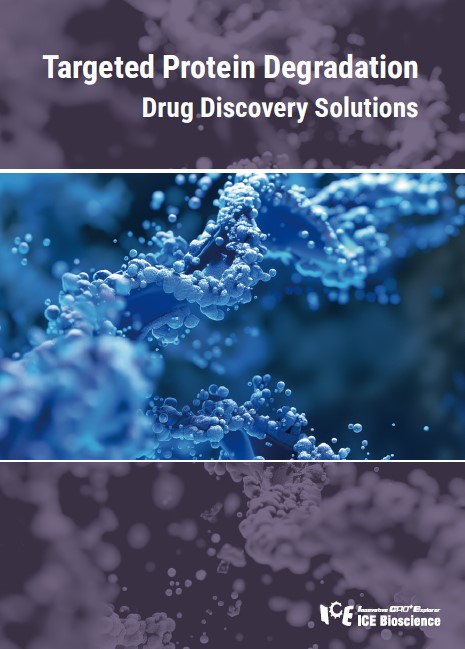Targeted protein degradation (TPD) is transforming modern therapeutics, providing innovative solutions for addressing previously undruggable targets. Unlike traditional drugs that inhibit protein activity, TPD eliminates disease-causing proteins by leveraging natural cellular degradation systems. As interest in this approach skyrockets, targeted protein degraders suppliers face unique opportunities and challenges in scaling production, optimizing supply chains, and driving collaborative innovations. This article provides an in-depth look into the critical aspects of pharmaceutical production, highlighting the latest market trends, technological advancements, and challenges faced by the industry. It also explores effective strategies for suppliers to remain competitive, meet regulatory requirements, and adapt to the ever-evolving demands of the global pharmaceutical market.
Table of contents:
Scaling Production: Challenges and Solutions in Manufacturing Targeted Protein Degraders
Supply Chain Optimization for Target Protein Degradation Services
Collaborative Innovations: Partnering with Research Institutions for Targeted Protein Degradation
Market Analysis: Demand Forecast for Targeted Protein Degraders
Manufacturers of targeted protein degraders face unique challenges in scaling production due to the complexity of these molecules and the intricate processes involved. The precise design of protein degraders requires advanced technologies, such as CRISPR-based assays and proteomics. Ensuring consistency between batches while maintaining efficacy and safety standards adds an additional layer of difficulty. Target protein degradation supplier can overcome production challenges by leveraging robust quality control processes like LC-MS and NanoBRET screening. Incorporating advanced technologies such as automated chiral purification and flow chemistry ensures efficient and precise manufacturing processes, enabling companies to meet the growing demand for high-quality products.

The targeted protein degradation market is highly complex, requiring a streamlined supply chain to ensure that both manufacturers and suppliers deliver efficiently. Establishing a global network of specialized suppliers is paramount to maintaining a reliable materials flow. Advanced inventory management software and data integration tools provide suppliers with powerful capabilities to enhance their operations. These tools allow suppliers to accurately predict demand spikes by analyzing historical data and market trends, ensuring they are prepared to meet customer needs without overproducing. Additionally, they enable real-time tracking of materials across the supply chain, offering full visibility into inventory levels and shipment statuses at any moment. This level of insight allows for better decision-making and more efficient resource allocation.
Collaboration is key to accelerating advancements in targeted protein degradation, a rapidly evolving field with significant potential for developing new therapies. These tools have become indispensable for researchers aiming to better understand protein dynamics and degradation pathways. Beyond research, collaborative efforts open doors to accessing novel IP (intellectual property), fostering partnerships that drive joint fundraising opportunities, and pooling shared resources like expertise, technology platforms, and data. By working together, researchers, companies, and other stakeholders can overcome challenges more efficiently, pooling their expertise, resources, and unique perspectives to tackle complex problems. This collaborative effort not only pushes the boundaries of what is possible but also accelerates the development of innovative solutions that benefit the entire scientific and medical community, ultimately improving outcomes for society as a whole.
The market for targeted protein degraders continues to witness substantial growth, driven by a rising interest in addressing complex and previously untreatable diseases, such as cancer, neurodegenerative disorders, and other challenging conditions. These innovative therapies work by selectively breaking down disease-causing proteins, offering a novel approach to drug development that is capturing significant attention across the pharmaceutical industry. For targeted protein degrader suppliers and manufacturers, these trends emphasize the critical need to stay ahead of emerging demands. This includes not only adapting to advancements in technology and research but also meeting the specific requirements of prospective clients by delivering tailored solutions. Additionally, expanding product portfolios to include a diverse range of therapeutics aligned with global market needs will be essential for maintaining a competitive edge and driving further innovation in the field.
The targeted protein degradation industry is poised for significant advancements in the coming years, driven by a combination of innovative research, technological progress, and evolving healthcare challenges. Companies operating in this space must remain agile, leveraging new opportunities to deliver tailored solutions and broaden their therapeutic offerings. By aligning with market demands and fostering collaboration within the scientific community, stakeholders can solidify their positions as leaders in this rapidly growing field, ultimately contributing to groundbreaking medical breakthroughs and improved patient outcomes worldwide.
2025-12-10
2025-12-10
2025-12-10
2025-12-03
We value your inquiries and are here to provide you with tailored solutions for your drug discovery and development needs. Whether you have questions, require more information, or are interested in discussing potential collaborations, our team of experts is just a message away.
Feel free to reach out to us.